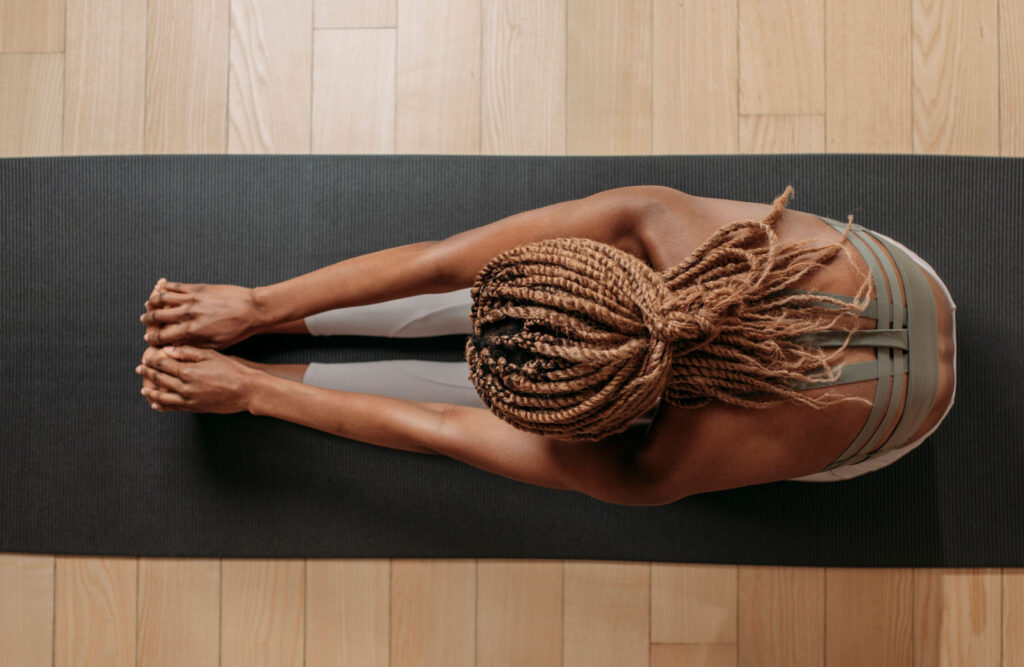Have you felt the surge of interest in yoga and meditation within the wellness industry? It seems everyone’s looking to find inner peace and improve their physical well-being through these ancient practices. Yet, many people still confuse yoga and meditation with being the same. While both offer incredible benefits, understanding their unique focus is key to maximizing their potential within the world of well-being.
Let’s explore the world of yoga and meditation. By the end of this blog, you’ll have a clear grasp of their distinctions and how they can become powerful tools for enhancing your wellness offerings. After all, providing the right mix of practices is essential to attract and retain those seeking a holistic approach to health.

What is Yoga?
Yoga is an ancient practice originating in India, going far beyond the physical poses we often associate it with. It’s a comprehensive system designed to unite the body, mind, and spirit. Let’s break down the key components relevant to understanding its distinction from meditation:
- Asanas (Physical Postures): The yoga poses you see people practicing are called asanas. They focus on building strength, flexibility, and balance. Think of them as a way to exercise your body and mind’s focus.
- Pranayama (Breathing Exercises): Yoga features controlled breathing techniques aim to calm the mind and energize the body. Learning to manage the breath is a cornerstone of many yoga practices.
- Meditation (A Potential Component): While meditation can be a part of a yoga practice, it’s crucial to recognize the subtle distinctions between the two. Yoga’s primary focus is the union of body and mind, while meditation delves purely into mental focus.
Enhance your studio’s yoga offerings with streamlined class management through Yoga Studio Software.
What is Meditation?
In contrast to yoga, meditation is a practice of training the mind. Its primary focus lies in cultivating present-moment awareness and mental clarity. While there are numerous meditation techniques, here’s a look at its core elements:
- Focused Attention: Meditation involves focusing on a specific object or sensation. This could be your breath, a mantra (a repeated sound or word), a visualization, or even a bodily sensation.
- Non-Judgmental Observation: The key to meditation is observing your thoughts and feelings without getting entangled in them. You learn to acknowledge them with a sense of detachment, fostering calmness and reducing reactivity.
- Purposes: Meditation is practiced for diverse benefits. Key among these is stress reduction, improved mental clarity, enhanced self-awareness, and better emotional regulation.

Yoga vs. Meditation – Key Differences
Let’s break down the key distinctions between yoga and meditation to gain a clearer understanding:
- Movement vs. Stillness: Yoga actively engages the body through a series of postures (asanas). It fosters strength, flexibility, and a sense of embodiment. Meditation, on the other hand, cultivates stillness. While some styles might utilize gentle movements to guide you into a seated position, the primary practice involves minimal physical exertion.
- Integrated Focus vs. Mental Training: Yoga takes a holistic approach, to harmonize the body and mind. Meditation delves deeper, focusing on training the mind to achieve clarity, awareness, and a sense of calm amidst the constant stream of thoughts.
- Breath as Tool vs. Object of Focus: Both yoga and meditation involve breath awareness in distinct ways. Yoga utilizes controlled breathing techniques (pranayama) to energize and calm the body. In meditation, the breath often serves as the primary anchor point, something to observe as it naturally flows in and out.
- Diverse Styles vs. Varied Techniques: There’s a broad spectrum of yoga styles, from gentle and restorative to dynamic and physically challenging. Meditation, on the other hand offers various techniques (such as mindfulness, guided, and mantra-based), centered around focused attention and non-judgmental awareness.
- Space and Equipment Considerations: Offering yoga classes might necessitate more space and equipment like mats, blocks, or straps to accommodate the physical movements. Meditation classes can be conducted in more compact spaces, often requiring cushions or chairs for comfortable seating.
The Benefits of Yoga and Meditation for Studio Owners
Incorporating yoga and meditation into your wellness offerings opens up a world of possibilities for your business. Here’s a deeper look at how they can positively impact your studio:
- Increased Client Attraction: Many people are drawn to yoga and meditation’s stress-relieving and mind-calming benefits. By offering both, you become a one-stop shop for diverse wellness needs, attracting a wider range of those seeking physical well-being, mental clarity, or a combination of the two.
- Expanded Offerings: Diversify your schedule beyond traditional yoga classes. Consider meditation workshops focused on specific goals like stress reduction or mindfulness. Host weekend retreats that blend yoga and meditation for a deeply immersive experience. You could even design hybrid classes that seamlessly merge elements of both practices, offering a unique experience for your clients.
- Competitive Edge: Specialization sets you apart. By positioning your studio as a haven for both physical and mental wellbeing, you attract clients who might not be satisfied with a traditional gym experience.
- Instructor Opportunities: Broaden your talent pool by attracting instructors specializing in yoga, meditation, or both. This allows you to offer a comprehensive range of classes and expertise, enhancing your studio’s reputation.
- Enhanced Studio Ambiance: Yoga and meditation are synonymous with tranquility, relaxation, and mindfulness. By integrating them into your offerings, you cultivate a serene and welcoming atmosphere within your space – a true sanctuary amidst the bustle of everyday life.
Should My Studio Offer Both Yoga and Meditation?
The decision to offer both yoga and meditation depends on several factors. Consider these questions to help you make an informed choice:
- Target Audience: Who are you serving? Are they drawn to both practices or do they prefer focusing on physical or mindful practices? Understanding your clientele’s needs and interests is crucial.
- Studio Space: Do you have enough room to accommodate separate yoga and meditation classes? If space is limited, you might need to schedule them at different times or consider offering one primarily.
- Instructor Availability and Expertise: Can you find qualified instructors who specialize in both yoga and meditation? If not, it might be wise to start by offering one practice and expand as you find suitable instructors.
- Market Demand: Research your local area. Is there a high demand for both yoga and meditation? Are there already dedicated yoga or meditation studios nearby? Understanding the market helps you determine if offering both provides a competitive edge.

Pros and Cons
Here’s a quick overview of the advantages and challenges of offering both yoga and meditation:
Pros:
- Attract a wider range of clients seeking diverse wellness solutions
- Increase potential revenue sources with expanded class offerings
- Position your studio as a true holistic wellness destination
Cons:
- May require additional space to accommodate separate classes
- Might need to invest in finding qualified instructors for both
- Could face competition from specialized yoga or meditation studios

Yoga + Meditation: Simplify Your Wellness Offerings with the Right Tools
It’s clear that yoga and meditation, while distinct, offer incredible potential when embraced as complementary practices. By understanding their unique benefits and how they align with your studio’s vision, you can make informed decisions to enhance your offerings and boost client satisfaction.
Mariana Tek’s newest client, Tower Yoga, demonstrates their forward-thinking approach to wellness with their popular ‘Tea Sit & Meditation’ sessions. This innovative offering showcases their commitment to providing a holistic experience for their clients.
Interested in seeing how Mariana Tek can support your studio’s growth? Book a demo to explore how our software simplifies the management of yoga, meditation, and all your wellness offerings.

by Julie Sippy Senior Marketing Manager, Brand & Community
-
First published: April 15 2024
Written by: Julie Sippy
